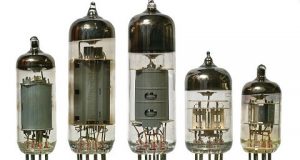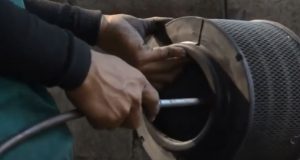How do Vacuum Breakers Work?
When it comes to water supply in our homes, vacuum breakers are an essential component. Vacuum breakers help to protect against backflow, as well as they help to create pressure. Vacuum breakers are handy items when you have a fresh water supply in your home. But have you ever wondered how this exciting device works? In this article, we will try to explain the working principle of a vacuum breaker so you can ensure its maximum use. Keep reading to find out more about vacuum breakers.
What is a Vacuum Breaker?
In a steam pipe system or a machine, the thing that affects the air to fill a vacuum is the vacuum breaker. The vacuum breaker helps break unwanted vacuum inside any system that is consistent with its name. Now you may be wondering what you need a vacuum breaker for. Well, let’s look at an example to make things more transparent.
Now imaging a vacuum breaker set installed in a steam piping system to condense the steam. Notably, the piping system needs to be appropriately designed to take care of the vacuum situation. Here, the vacuum condition is meant to test the thickness of the piping that creates the pressure. In a scenario like this, a vacuum breaker fills the air vacuum and protects the piping system.
How do Vacuum Breakers Work?
Now that you know what a vacuum breaker is let us look at how a vacuum breaker works. A vacuum breaker consists of two major parts, the valve or check device and an inlet. The check valve is the part of the vacuum breaker that allows water to enter the system. At the same time, the air inlet during normal conditions is closed.
If the air pressure is higher than the water pressure, the way is open for ventilation. As such, the effect of low-pressure suction is broken, and the flow of water stops. Additionally, the reason behind installing a vacuum breaker is to ensure the water source is shut before it enters the sprinkler valve. So, please set it to the top of the system.
Why use Vacuum Breakers?
Knowing how a vacuum breaker works is one thing; putting it to good use is another thing. Let us look at some of the reasons why you need to add a vacuum breaker to your plumbing system:
- With a vacuum breaker, you can completely condensate drainage under different operating conditions, whether it is on and off.
- A vacuum breaker is a vital device that can help to safeguard you against a water hammer.
- Additionally, vacuum breakers can be used to reduce product wastage and provide durable service.
- A vacuum breaker can also be used to regulate temperature during temperature fluctuation and uneven temperature.
Maintenance of Vacuum Breaker
Maintaining your vacuum breaker is vital to ensure maximum effectiveness. Maintaining the vacuum breaker will also ensure you get a longtime service out of it. However, the most crucial reason you should maintain your vacuum breaker is to ensure it never freezes. Once the sprinkler system is assembled, the valves inside the breaker will open halfway and block air pressure.
Maintaining your vacuum breaker is particularly important, especially in the winter season. In the cold season, draining it during a sprinkler blowout can be quite challenging. In addition, if you fail to remove your vacuum breaker in a timely and proper manner, the inside of it may rupture or damage. For this reason, manufacturers of vacuum breakers advise you to change the internal parts of the vacuum breaker at least once every five years.
Types of Vacuum Breakers
There are up to four different types of vacuum breakers. It is essential to know the difference between them to get one that will serve the best purpose for what you want. So let’s take a close look at the working principle and use of the types of vacuum breakers.
● Atmospheric Vacuum Breakers
The atmospheric vacuum breaker comes with a check valve and an air vent. When there is a water supply in an atmospheric vacuum breaker, pressure on that valve closes the vent; this allows air to enter the system, which blocks the siphon from reaching the point of use. Although atmospheric vacuum breaker only protects against the siphon, these devices are placed on plumbing appliances and fixtures. Atmospheric vacuum pressure cannot handle up to 12 hours of water pressure and backpressure, as it can get stuck or sealed.
● Hose Connection Vacuum Breakers
One of the most significant upsides of the hose connection vacuum breaker is that it inhibits the backflow of the water supply. The hose connection vacuum breaker inhibits it by venting water into the atmosphere to minimize the impact of backflow conditions. When the pressure is high, the flow is directed towards the hose to vent it out, but when the pressure exceeds the supply of pressure or is interrupted, outflow stops, and the spring-loaded check valve closes.
● Pressure Vacuum Breakers
A pressure vacuum breaker is an advanced form of an atmospheric vacuum breaker. They can handle continuous water pressure, contrary to what many people believe. Unlike atmospheric vacuum breakers, pressure vacuum breakers have a spring-loaded check valve. So, when the pressure reduces, the spring opens the check valve so that air can enter to break down the siphon. You should only install a pressure vacuum breaker where outlet pressure is lower than the inlet pressure.
● Spill-Resistant Vacuum Breakers
The spill-resistant vacuum breaker is an advanced and modern form of pressure vacuum breaker. What differentiates it from pressure vacuum breakers is that the check valve and air inlet do not work independently. Instead, the diaphragm at the bottom of the valve chamber closes the poppet before the internal check valve opens.
Bottom Line
To sum things up, it always pays to invest in a high-quality vacuum breaker as they will give you long-lasting water service. Now that you know how a vacuum breaker works, you wouldn’t have any trouble finding an advanced quality vacuum breaker. So, purchase a standard vacuum breaker according to your needs and budget.




